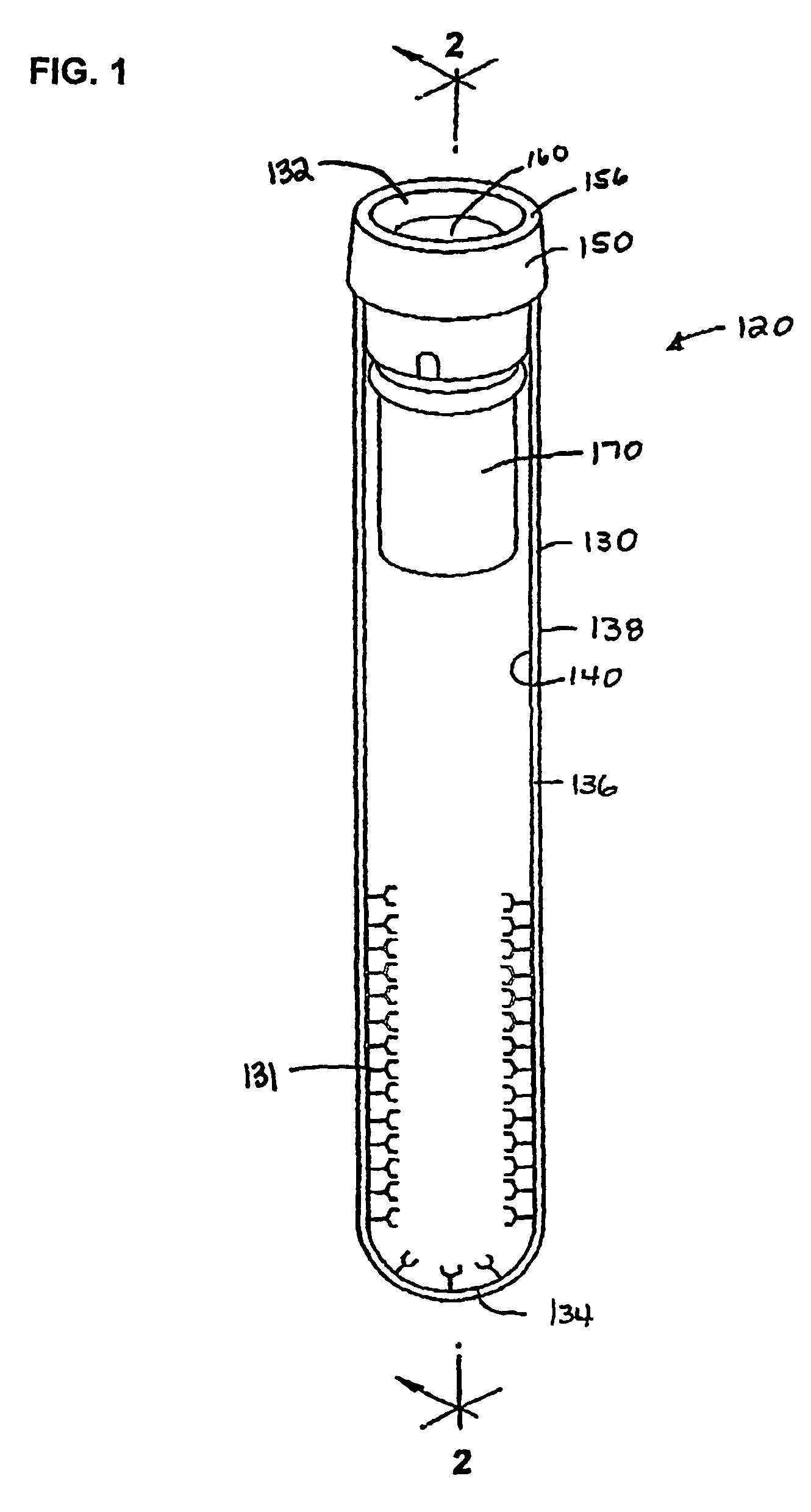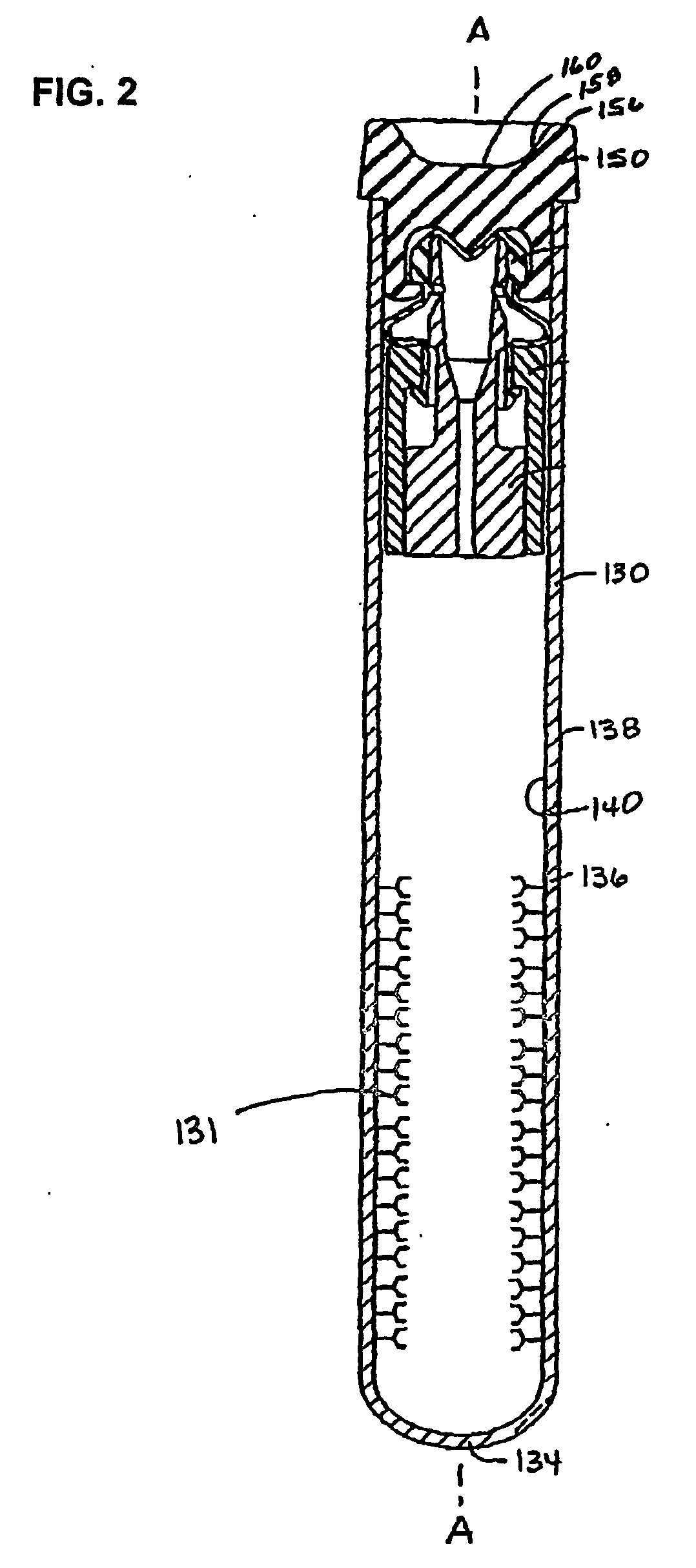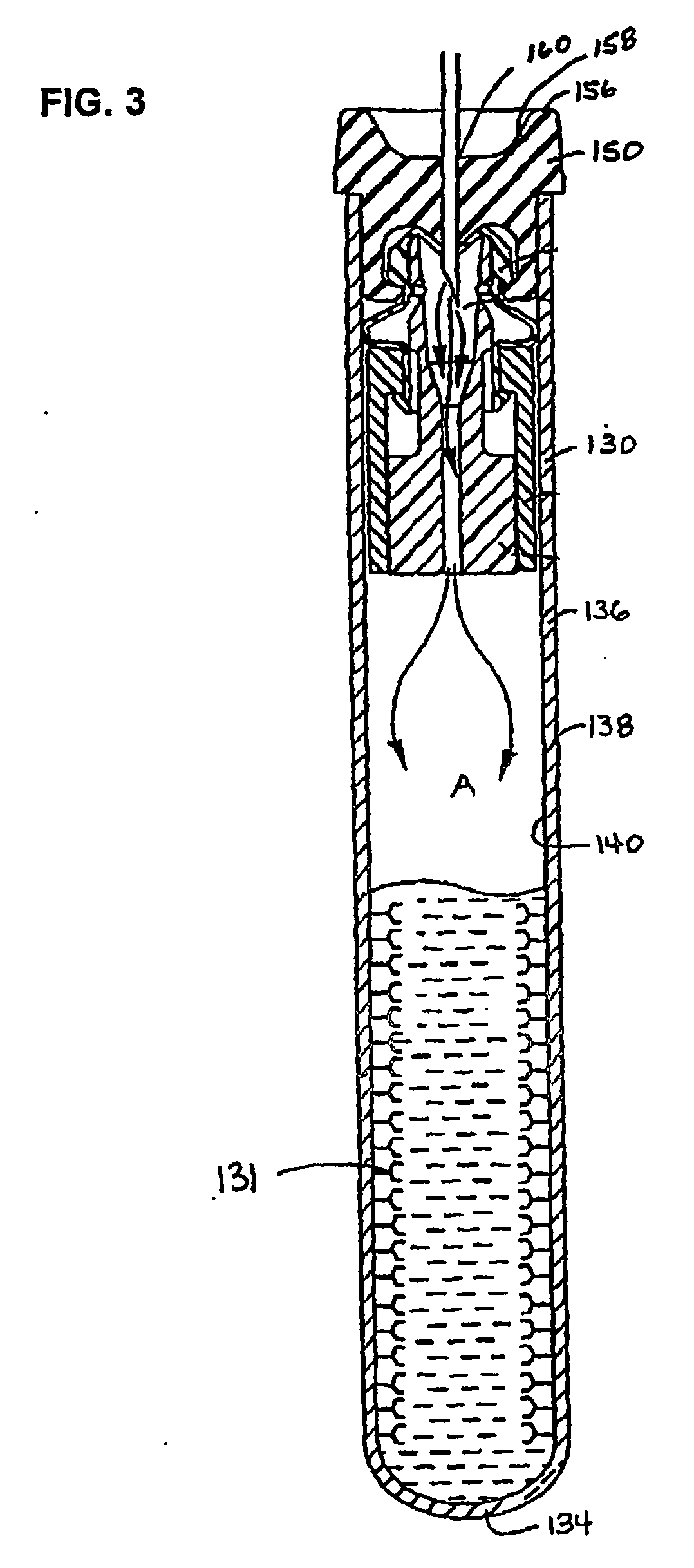Devices for component removal during blood collection, and uses thereof
a technology for blood collection and components, applied in the field of blood collection devices and methods, can solve the problems of insufficient specificity of clean-up methods, increased processing errors, and increased risk of operator exposure to potentially infectious blood components
- Summary
- Abstract
- Description
- Claims
- Application Information
AI Technical Summary
Benefits of technology
Problems solved by technology
Method used
Image
Examples
example 1
Coating Evacuated Polystyrene Tubes with High Affinity Antibodies
[0066] High affinity antibodies (˜10−8 M-˜10−12 M) directed toward, for example, albumin (“albumin antibodies”) can be purchased from various suppliers. Polystyrene tubes are sterilized, and the albumin antibodies are covalently linked to the tubes as outlined in Tijssen, P., Practice and Theory of Enzyme ImmunoAssays, in Burdon, R H and Knippenberg, P H, (Eds.), Laboratory Techniques in Biochemistry and Molecular Biology, Elsevier Science Publishers, Vol. 15: 297-329 (1985), the entirety of which is hereby incorporated by reference. Briefly, the tubes are pretreated with 0.2% (v / v) glutaraldehyde in 100 mM sodium phosphate buffer, pH 5.0, for 4 hours at room temperature. The tubes are then washed twice with the same buffer and an antibody solution, which is prepared by adding 2-10 ug / mL in 100 mM sodium phosphate buffer, pH 8.0, is poured into the tubes and allowed to incubate for 3 hours at 37° C. After incubation, ...
example 2
Collection of Blood In Coated Tubes
[0067] Blood is drawn from a patient and collected in the coated evacuated tubes as prepared in Example 1. The blood is allowed to incubate in the tube at room temperature for approximately 5-90 minutes (depending on the affinity and concentration the antibody used in coating the tubes), while the tubes are gently rocked or otherwise mixed to allow binding of albumin to the antibodies on the sides of the tubes. The tubes can be incubated overnight at room temperature.
example 3
Testing the Ability of the Coated Tubes to Remove Albumin or Other Interfering Proteins
[0068] The blood collected in Example 2 is then centrifuged at 1100 G for about 10 minutes to separate the components. After component separation, the proteins in the albumin-depleted plasma is subjected to 2D gel, as described in Celis, J E, and Bravo, R, (Eds.), Two-Dimensional gel Electrophoresis of Proteins, Academic Press (1984), the entirety of which is hereby incorporated by reference. 2D gel electrophoresis will separate the remaining proteins in the sample, based on molecular weight and isoelectric point. The separated proteins are then isolated and purified using the Montage In-Gel Digest96 Kit™ (Millipore Corp.) according to the manufacturer's protocol. Proteins of interest are identified using Matrix-assisted laser desorption / ionisation-time of flight mass spectrometry (MALDI-TOF MS) on an Axima CFR MALDI-TOF Mass Spectrometer (Kratos Analytical, Inc.), as described in Worrall, T A, e...
PUM
| Property | Measurement | Unit |
|---|---|---|
| Time | aaaaa | aaaaa |
| Affinity | aaaaa | aaaaa |
Abstract
Description
Claims
Application Information
 Login to View More
Login to View More - R&D Engineer
- R&D Manager
- IP Professional
- Industry Leading Data Capabilities
- Powerful AI technology
- Patent DNA Extraction
Browse by: Latest US Patents, China's latest patents, Technical Efficacy Thesaurus, Application Domain, Technology Topic, Popular Technical Reports.
© 2024 PatSnap. All rights reserved.Legal|Privacy policy|Modern Slavery Act Transparency Statement|Sitemap|About US| Contact US: help@patsnap.com










